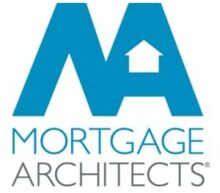It looks like mortgage rates could finally be heading higher in 2015. I know what you’re thinking: we hear the so-called mortgage experts at the big banks predict this every year. What makes this year any different? Plenty. While the Canadian economy is still lagging, the U.S. economy has never been in better shape. While our neighbours to the south enjoy 3 percent GDP growth, we’ll be lucky if we see 2 percent growth in 2015.
If you’re hoping to buy a home and take advantage of record-low borrowing costs, your window could be closing. Despite what Canadians like to say, we’re largely followers of the U.S. (not the other way around). When the Federal Reserve hikes interest rates in mid-2015 as many expect, Canada will be likely to follow. What will this mean for would-be homebuyers? Although price appreciation should slow, it will cost homebuyers more in the way of financing to buy their dream home. If you’re looking to buy a home in 2015, here are some tips to get your financial house in order.
1. Pay Yourself First
If you’ve never owned a home before, you may be wondering how you could possibly come up with a hefty down payment out of thin air. While a 20 percent down payment may be possible in less expensive housing markets like Winnipeg and Saskatoon, most homebuyers struggle to cobble together a 5 percent down payment in pricey real estate markets like Calgary, Toronto and Vancouver.
They say there are two types of people: savers and spenders. So what do you do when you’re the latter and you’d like to be the former? As personal finance expert David Chilton preaches in the Wealthy Barber Returns, you pay yourself first. By paying yourself first, you take the pain out of saving. When you automate your savings, you can set it and forget it. Figure out how much you can afford to sock away – whether it’s $200 a week – and deposit it in your savings account before you’re tempted to spend it. It’s that easy!
2. Create a Budget
It can be tough to go from a lifelong renter to a homeowner in one fell swoop. While it’s sometimes better to rent instead of own, it’s hard to argue with the forced savings of a home. Unfortunately, your dreams of homeownership won’t happen on their own. You’ll have to take the necessary steps to proudly call yourself a homeowner.
One of those crucial steps is creating a budget. By creating a budget you can see where your money is going and how much you can afford to save towards your down payment. A family budget can be an eye-opening experience: when you realize you’re spending $200 a month on cable, you might think twice about ordering all those extra specialty TV channels you never watch.
3. Going Renter to Owner
When you’re a tenant you may be able to get away with constantly being late on your rent, but when you’re a homeowner with a mortgage, the bank doesn’t take too kindly to late mortgage payments. If you’re not able to pay your rent on time right now, what are the chances you’ll be able to magically start paying your mortgage on time? I’m willing to wager not very good. Unless you’re ready to find a foreclosure notice on your front door when you come home from work one day, you need to learn to be responsible with your money. Only then will you be ready to take the plunge and become a homeowner.
4. Don’t Forget Your Closing Costs
Many homebuyers forget to budget for closing costs. Closing costs include land transfer tax, home inspection, real estate lawyer fees and prepaid utilities. Closing costs can’t add up to much, right? Wrong. Closing costs can range from 1.5 to 4 percent of your home’s purchase price. And no, your bank doesn’t cover them; you’re responsible for them. For example, on a $500,000 home, you can could pay up to $20,000 in closing costs. Do you still think it’s chump change? By budgeting for closing costs ahead of time, you’ll be less likely to be left scrambling at the eleventh hour, going to the bank of mom and dad on your hands and knees.
